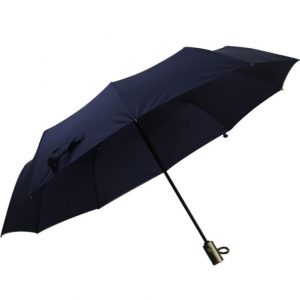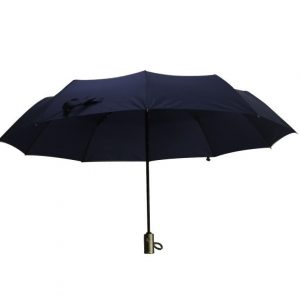Umbrella materials play a crucial role in determining the durability, water resistance, and overall performance of the umbrella. Manufacturers use various fabrics to create durable and reliable umbrellas. Here are some common umbrella materials known for their durability:
- Polyester: Polyester is one of the most widely used materials in umbrella canopies. It is known for its durability, resistance to stretching and shrinking, and ability to retain its shape. Polyester is also water-resistant, making it suitable for repelling rain. Additionally, it can withstand UV exposure, making it a good choice for sun protection umbrellas.
- Pongee: Pongee is a type of woven fabric made from silk or synthetic fibers like polyester or nylon. It is commonly used in high-quality umbrellas due to its smooth texture, softness, and water-resistant properties. Pongee provides a luxurious feel and is often used in premium and designer umbrellas.
- Nylon: Nylon is another popular material for umbrella canopies. It is lightweight, quick-drying, and offers excellent water resistance. Nylon is also known for its strength and durability, making it suitable for umbrellas used in various weather conditions.
- Microfiber: Microfiber fabrics are created using fine synthetic fibers. These fabrics are lightweight, soft, and water-resistant, making them a good choice for compact and portable umbrellas. Microfiber umbrellas are easy to fold and carry, making them ideal for travel.
- Olefin: Olefin, also known as polypropylene, is a durable and water-resistant material often used in golf umbrellas and beach umbrellas. It is resistant to mildew, mold, and fading, making it suitable for outdoor use.
- Vinyl: Vinyl-coated fabrics offer excellent water repellency and are easy to clean. Vinyl umbrellas are commonly used in commercial settings, such as outdoor cafés and restaurants.
- Teflon-Coated Fabrics: Some high-end umbrellas use Teflon-coated fabrics, which provide enhanced water and stain resistance. Teflon helps the water bead up and roll off the umbrella surface, keeping the fabric drier and cleaner.
- UV-Protective Fabrics: Some umbrella canopies are specially treated with UV-protective coatings to block harmful UV rays. These fabrics offer sun protection and prevent the umbrella from fading due to sun exposure.
- Acrylic: Acrylic fabrics are often used in high-quality outdoor umbrellas. They are fade-resistant, water-resistant, and can withstand harsh weather conditions.
When considering the durability of an umbrella, it’s not only the canopy material that matters but also the frame materials. Sturdy frames made from materials like fiberglass, steel, or aluminum contribute to the overall durability and wind resistance of the umbrella.
Ultimately, the choice of umbrella material depends on your specific needs, preferences, and budget. For long-lasting performance, opt for umbrellas made from high-quality, durable fabrics and well-constructed frames.








